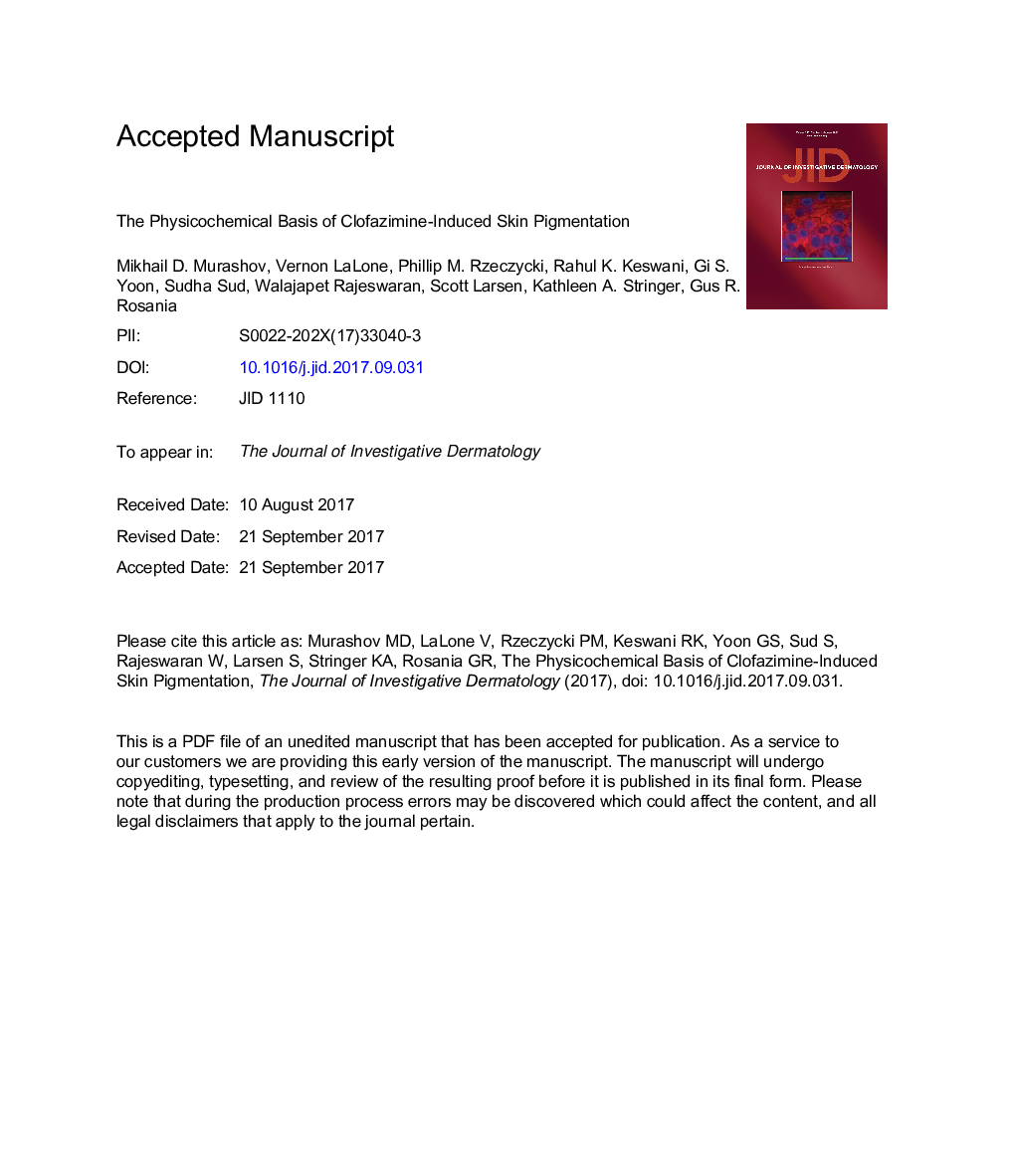| Article ID | Journal | Published Year | Pages | File Type |
|---|---|---|---|---|
| 8716126 | Journal of Investigative Dermatology | 2018 | 24 Pages |
Abstract
Clofazimine is a weakly basic, Food and Drug Administration-approved antibiotic recommended by the World Health Organization to treat leprosy and multi-drug-resistant tuberculosis. Upon prolonged treatment, clofazimine extensively bioaccumulates and precipitates throughout the organism, forming crystal-like drug inclusions (CLDIs). Due to the drug's red color, it is widely believed that clofazimine bioaccumulation results in skin pigmentation, its most common side effect. To test whether clofazimine-induced skin pigmentation is due to CLDI formation, we synthesized a closely related clofazimine analog that does not precipitate under physiological pH and chloride conditions that are required for CLDI formation. Despite the absence of detectable CLDIs in mice, administration of this analog still led to significant skin pigmentation. In clofazimine-treated mice, skin cryosections revealed no evidence of CLDIs when analyzed with a microscopic imaging system specifically designed for detecting clofazimine aggregates. Rather, the reflectance spectra of the skin revealed a signal corresponding to the soluble, free base form of the drug. Consistent with the low concentrations of clofazimine in the skin, these results suggest that clofazimine-induced skin pigmentation is not due to clofazimine precipitation and CLDI formation, but rather to the partitioning of the circulating, free base form of the drug into subcutaneous fat.
Related Topics
Health Sciences
Medicine and Dentistry
Dermatology
Authors
Mikhail D. Murashov, Vernon LaLone, Phillip M. Rzeczycki, Rahul K. Keswani, Gi S. Yoon, Sudha Sud, Walajapet Rajeswaran, Scott Larsen, Kathleen A. Stringer, Gus R. Rosania,
